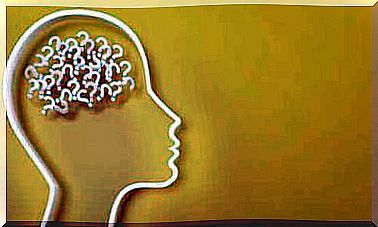Practicing Kindness Is Good For The Brain And Changes It

No act of kindness, no matter how small, is a waste of time. It is in these small gestures charged with affection and gratitude that we find authentic wisdom, that which is beneficial for our brain and which connects us to others in the most honest and noble way possible.
It may seem surprising, but Charles Darwin spoke to us in his day about the importance of kindness in human beings. According to him, this is actually our strongest and most precious instinct, the one that makes possible the survival not only of humanity as a species but of all living beings as well. Yet kindness is not practiced enough these days.
Kindness has a very concrete space in the brain: it shares the same neural mechanisms as empathy. While one identifies the needs, the other translates this feeling into a spontaneous and deep act to promote good, to offer well-being.
This exceptional mechanism has a very concrete objective in our brain: to make us understand that we are much stronger by being connected to each other rather than alone. An interesting aspect that we want to explore with you today.

We are “programmed” to practice kindness
Jerome Kagan is a famous veteran professor of psychology at Harvard who champions the idea that our brains are programmed to practice kindness. It would be a biological inclination, the same as Charles Darwin stated in his time, where love, compassion or care have a very concrete purpose: to allow us to survive as a species.
Now, even if our brains are made with this “program” already installed, we do not necessarily lean in a priority and natural way towards kindness. Because other important biological trends unfortunately have a lot of influence on our behavior: anger, jealousy and of course violence.
For his part, Daniel Goleman reminds us that one of the most intense emotions for our brain is compassion. The whole limbic system resonates on the multiple connections when we practice it. Neurochemicals like oxytocin are released and suddenly a melody of positive emotions is orchestrated where empathy, reciprocity or the expressive desire to promote good ennobles us even more as a species.
It is something wonderful that is worth practicing.

Kindness is, for experts in human emotions, a hereditary instinct that taught our ancestors that in a hostile environment, it is not the strongest who survives but the one who has the best network of support.
Hence the fact that emotions are “contagious”, and that our mirror neurons allow us to identify fear in the other person in order to anticipate a risk. Or to see that providing help is a way of investing in ourselves, so that in the future, we are also helped when needed.
Training in compassion to take care of our mental health
David Keltner, professor at the University of Berkeley, United States, and director of the Center for the Research of Kindness, tells us that the values that structure our modern societies completely demolish our natural tendencies for compassion and kindness.
Money in itself is an element that individualizes us, discriminates against us and forces us to compete with each other. We lose the cohesion of the group and the explicit desire to guarantee good to our fellow human beings, because we suddenly become “opponents” to each other.
So much so that, according to what Professor Keltner explains in books such as “Born to be good”, the richest people are in general the least compassionate.

The technique of compassionate meditation
You should know that compassion, like kindness, can be worked on. Once we are aware that we have strayed too far from our essence and that we have become selfish, materialistic or that we lack authenticity in our personal relationships, it is maybe so much to think about the need for change.
According to work published in the journal “Psychological Science”, adults can practice compassionate meditation so that they can reactivate those areas of our brain that have fallen asleep or are simply out of order.
- Compassionate Meditation is a Buddhist technique based on visualizations.
- It is simply a matter of imagining personal situations where a loved one is going through a complicated time in their life.
- We have to “relive” this suffering in order to “rekindle” these emotional structures like the insular cortex, precisely linked to the need to bring consolation and support.
- The visualization begins by thinking of close people, and then, little by little, opens circles and environments that pass through friends, colleagues, neighbors, from simple acquaintances to complete strangers. -es.
- The basic idea is to empathize with the need of others, with pain, fear. Live this closeness with a person who suffers, whoever they are.

This type of exercise based on meditation, on an adapted control of breathing and on making deep contact with our emotions, generates, according to neurologists, an interesting cerebral plasticity. It allows us to relieve stress, to invest in well-being and in this inner wealth capable of changing the world.
Because kindness is the only investment that never fails.








